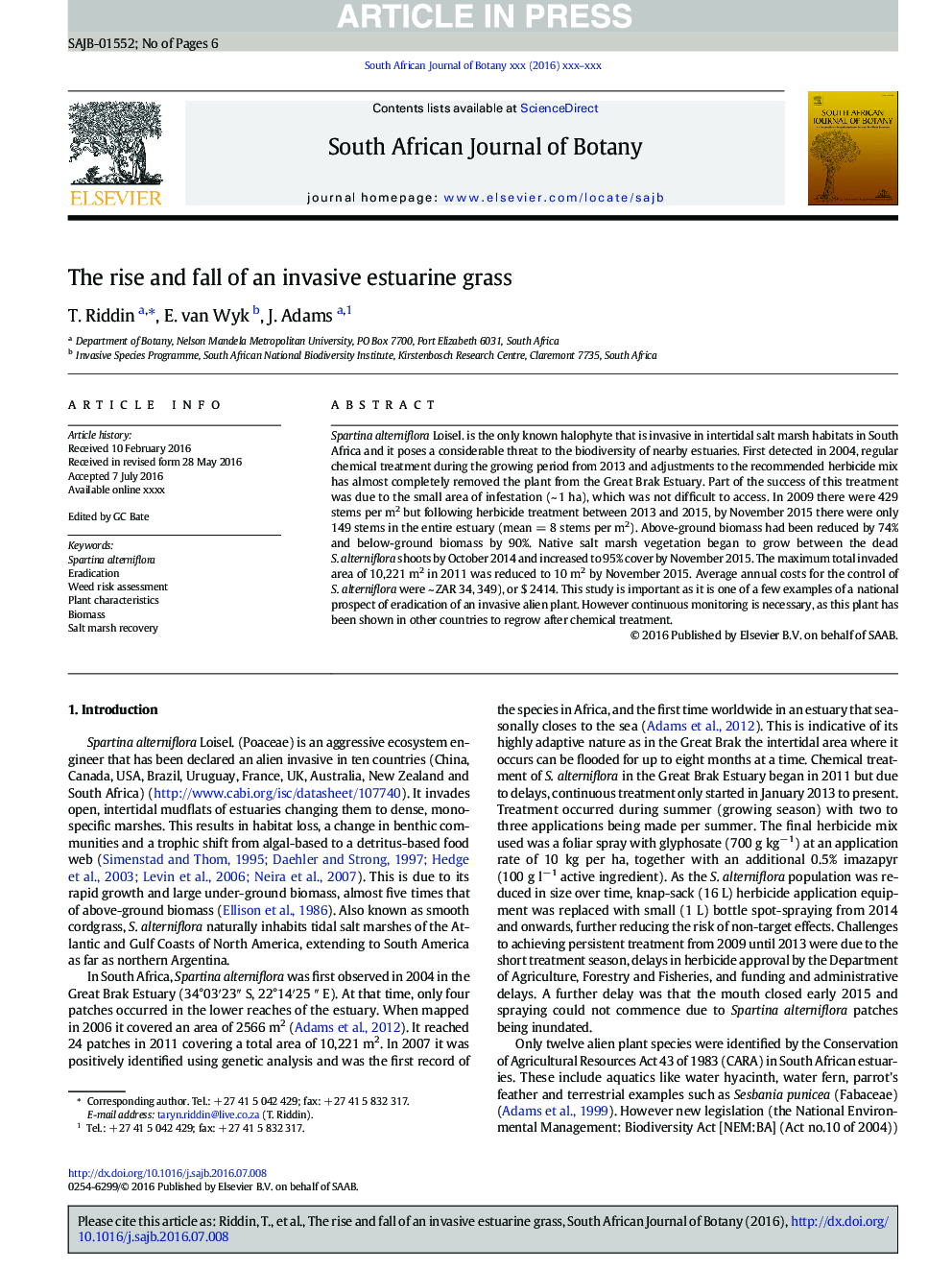| Article ID | Journal | Published Year | Pages | File Type |
|---|---|---|---|---|
| 5763136 | South African Journal of Botany | 2016 | 6 Pages |
Abstract
Spartina alterniflora Loisel. is the only known halophyte that is invasive in intertidal salt marsh habitats in South Africa and it poses a considerable threat to the biodiversity of nearby estuaries. First detected in 2004, regular chemical treatment during the growing period from 2013 and adjustments to the recommended herbicide mix has almost completely removed the plant from the Great Brak Estuary. Part of the success of this treatment was due to the small area of infestation (~ 1 ha), which was not difficult to access. In 2009 there were 429 stems per m2 but following herbicide treatment between 2013 and 2015, by November 2015 there were only 149 stems in the entire estuary (mean = 8 stems per m2). Above-ground biomass had been reduced by 74% and below-ground biomass by 90%. Native salt marsh vegetation began to grow between the dead S. alterniflora shoots by October 2014 and increased to 95% cover by November 2015. The maximum total invaded area of 10,221 m2 in 2011 was reduced to 10 m2 by November 2015. Average annual costs for the control of S. alterniflora were ~ ZAR 34, 349), or $ 2414. This study is important as it is one of a few examples of a national prospect of eradication of an invasive alien plant. However continuous monitoring is necessary, as this plant has been shown in other countries to regrow after chemical treatment.
Related Topics
Life Sciences
Agricultural and Biological Sciences
Agronomy and Crop Science
Authors
T. Riddin, E. van Wyk, J. Adams,
